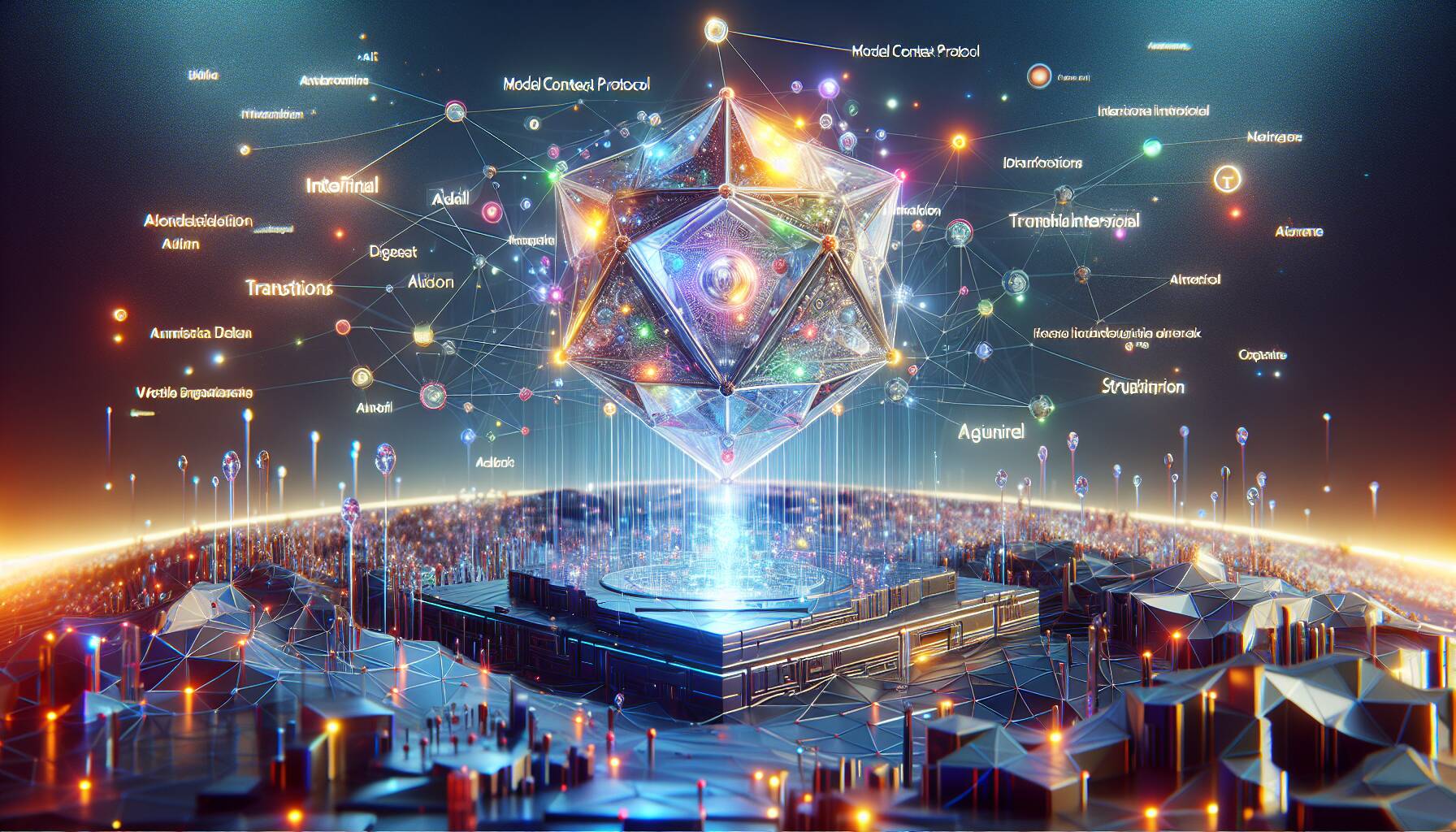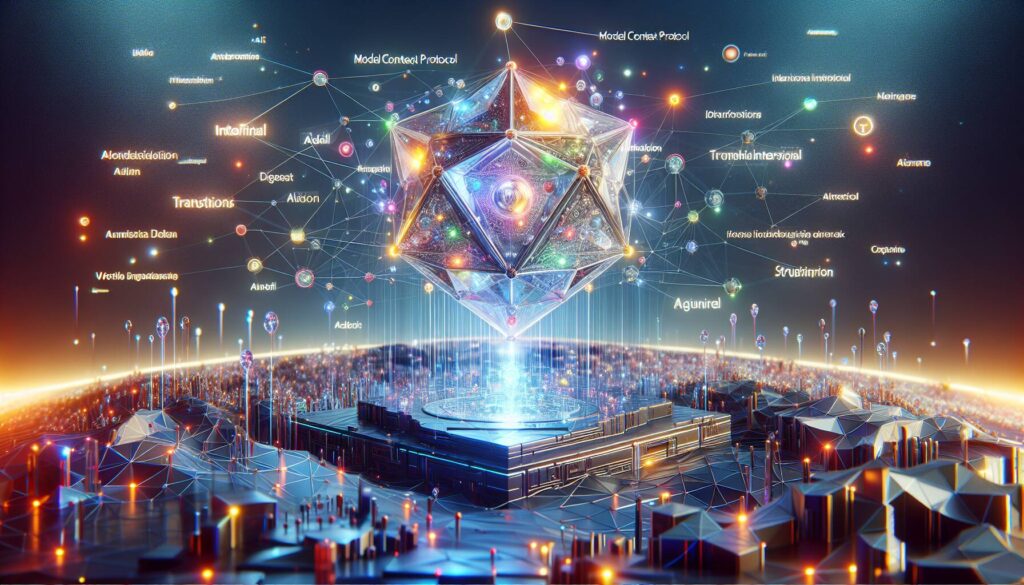The cryptocurrency and AI landscapes are on the verge of a transformative intersection, primarily through the emergence of the Model Context Protocol (MCP), a groundbreaking framework designed to enhance agent interactions across diverse platforms and datasets. Initially an experimental side project at Anthropic, MCP has quickly gained traction, evolving into a pivotal tool that could reshape how artificial intelligence communicates and operates in decentralized environments.
Much like the advent of HTTP revolutionized web communications, MCP aims to streamline the connection between AI applications and various data sources, enabling seamless and efficient workflows. Early adoption by leading platforms such as OpenAI, Google DeepMind, and Meta AI by mid-2024 showcases its growing importance in the industry.
MCP stands out by employing a lightweight client-server model that enhances the collaboration capabilities of AI agents. With foundational components like Tools, Resources, and Prompts, MCP ensures that diverse agents can operate cohesively, tapping into a wealth of contextual information across multiple platforms. This adaptability is particularly resonant within the Web3 community, where decentralized data and transparent protocols are at the forefront of innovation.
“The intersection of Web3 and MCP could unleash a tractable, trust-minimized framework for intelligent agents, paving the way for new protocols and efficiencies,”
As traditional blockchain infrastructures prepare to embrace MCP through new channels, initiatives like MIT’s Project Namda illustrate the tangible advancements taking place. By creating a decentralized ecosystem for agent communication, Namda highlights how MCP could redefine the future of AI, ushering in an era where decentralized systems not only coexist but thrive through interconnectivity and real-time collaboration.
The potential of MCP resonating within Web3 environments signifies a shift toward a more integrated approach to AI, where interoperability, security, and efficiency could become the norm rather than the exception. As this foundational technology continues to evolve, the possibilities for decentralized AI applications appear boundless.

Key Points on Model Context Protocol (MCP) and Its Impact
The Model Context Protocol (MCP) is poised to transform interactions in the AI landscape, particularly in conjunction with Web3 technologies.
- Origins and Development:
- Initially a side project at Anthropic, MCP facilitates agentic interactions across datasets and external resources.
- Adopted by major AI platforms by 2025, establishing it as a standard akin to HTTP for web communications.
- MCP Structure and Functionality:
- Employs a lightweight client-server model with distinct roles: MCP Host, Clients, and Servers.
- Utilizes three foundational primitives: Tools, Resources, and Prompts for agent collaboration.
- Relation to Web3:
- MCP can enable blockchain datasets to operate as servers or clients, enhancing decentralized AI interactions.
- Web3 may bolster a new generation of MCP networks, supporting scalability and interoperability.
- Project Namda:
- MIT’s initiative focusing on distributed agentic frameworks built on MCP, fostering collaboration without compromising security.
- Integrates dynamic discovery and fault tolerance, paving the way for efficient multi-agent workflows.
- Decentralized AI Potential:
- MCP addresses the challenges faced by decentralized AI, presenting a practical framework for mainstream applications.
- The interplay of Web3 and MCP could provide a new foundation for AI infrastructure, unlocking advanced capabilities.
Transforming Agentic Interactions: The Rise of the Model Context Protocol
The launch of the Model Context Protocol (MCP) marks a crucial shift in how AI interacts with data, resources, and external artifacts. Its resemblance to the pivotal HTTP protocol hints at its potential to revolutionize the landscape of AI platforms, fueling their integration and communication across varying domains. The clear advantages of adopting MCP are illuminated by its capacity to standardize agent interactions, streamline workflows, and enhance the capabilities of AI applications. Such efficiency could primarily benefit developers and researchers in the AI field, enabling them to create more cohesive and interoperable systems.
However, despite its promising framework, MCP’s journey isn’t devoid of challenges. The immediate need for nuanced knowledge of client-server interactions might intimidate non-technical users, limiting its accessibility. Furthermore, the absence of robust authentication and identity management presents significant hurdles, potentially raising concerns about security in decentralized environments. These issues may deter organizations from fully embracing MCP, especially those prioritizing data protection and regulatory compliance.
In comparison to similar advancements, projects like MIT’s Project Namda provide a compelling case study. Namda showcases a working model that encapsulates many principles of MCP while simultaneously highlighting its own competitive edges—such as dynamic node discovery and decentralized registries—which enhance trust and facilitate collaboration among agents. Nevertheless, MCP stands out for its inherent focus on facilitating seamless integration with Web3 technologies, which could prove particularly advantageous for blockchain initiatives looking to incorporate AI functionalities.
The implications of MCP’s success are vast. Companies invested in AI and Web3 are likely to see significant benefits, particularly those willing to adapt and invest in the necessary infrastructure. Conversely, traditional systems resistant to these innovations may find themselves at a disadvantage, struggling to keep pace in an increasingly sophisticated landscape. As the protocol evolves, those who fail to transition could experience isolation within their operational frameworks, diminishing their competitive edge.
In conclusion, while MCP presents transformative opportunities for the AI ecosystem, careful consideration of the outlined challenges will be essential for its widespread adoption and success.

















